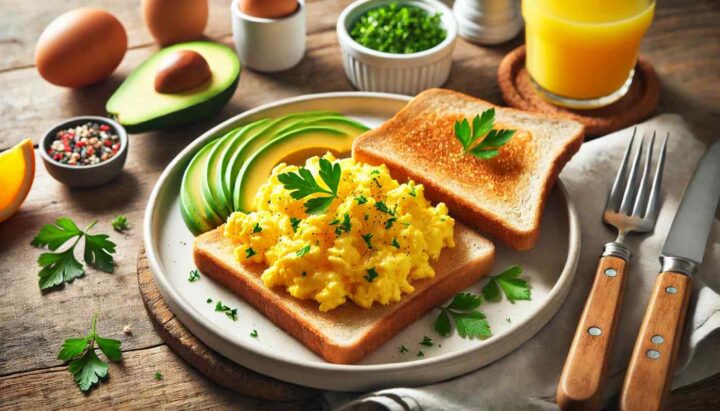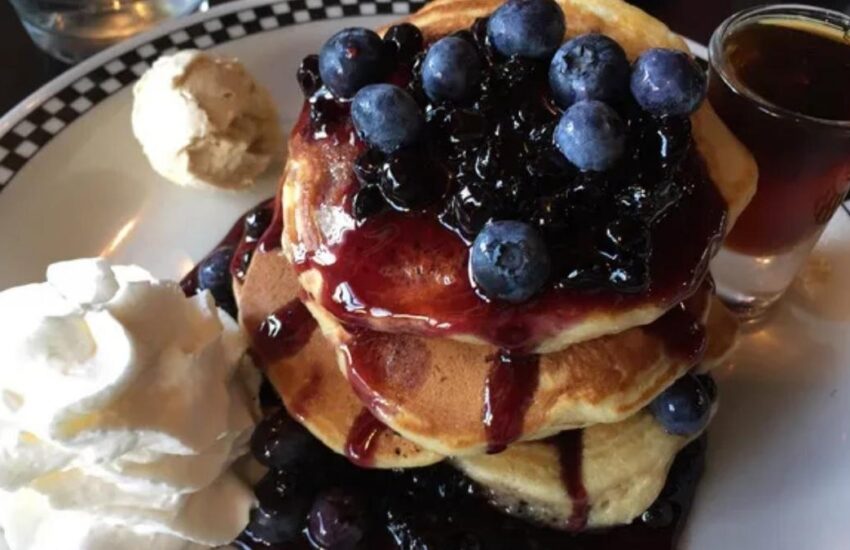Calories in Scrambled Eggs

Around the world, scrambled eggs are a breakfast classic—simple, versatile, and packed with nutrients. Whether you’re whipping up a quick solo meal or serving the whole family, it’s helpful to know just what goes into those fluffy eggs. How many calories do they really add to your day? And what about the additional milk or butter some might include? This post breaks it down, one egg at a time, so you can savor your scrambled eggs with confidence.
How Many Calories in a Scrambled Egg?
A single large scrambled egg contains 91 calories, according to the USDA. This includes 7g of fat, 169mg of cholesterol, and 6g of protein—making it a powerhouse of nutrition in a small package. Without milk, the calorie count stays at 91. However, if you add a tablespoon of milk (around 8 calories), the total climbs to 99 calories. Want extra creaminess? A tablespoon of butter adds another 100 calories, bringing the total to 191 calories.
Key nutrients include 88mg of sodium and 81mg of potassium, helping to balance electrolytes and support muscle function. Low in carbs but rich in protein and healthy fats, a scrambled egg is a great option for most diets.
Who Might Want to Eat 1 Scrambled Egg?
A single scrambled egg is perfect for light eaters or those looking for a small, low-calorie option to pair with other breakfast items. If you’re planning a low-intensity day—perhaps working at a desk or relaxing—one egg provides enough protein to keep you satisfied without overloading on calories. Pair it with a slice of whole-grain toast and a handful of fresh berries for a balanced, nutrient-packed breakfast that doesn’t weigh you down.
How Many Calories in 2 Scrambled Eggs?
Scrambling two large eggs provides 182 calories. Adding a splash of milk bumps this to 198 calories, while incorporating butter takes it to 282 calories. With 14g of fat and 12g of protein, two eggs offer a satisfying start to your day.
In addition to the calories, you’ll get 338mg of cholesterol, about 6% of your daily potassium needs, and a modest 176mg of sodium. For those keeping an eye on heart health, the high cholesterol might seem concerning, but research suggests moderate egg consumption can be part of a healthy diet.
Who Might Want to Eat 2?
Two scrambled eggs are an ideal choice for those with moderate appetites or a morning of light exercise, such as yoga or walking. The 12g of protein and 14g of fat provide sustained energy for activities requiring a bit more stamina. To make this meal more complete, consider adding sautéed spinach, mushrooms, or a sprinkle of shredded cheese, along with a slice of avocado on the side for healthy fats.
How Many Calories in 3 Scrambled Eggs?
Three scrambled eggs contain 273 calories when cooked without milk. With milk, the total reaches 297 calories, while butter adds richness and increases it to 473 calories. You’ll benefit from 21g of protein and 105mg of potassium, alongside 507mg of cholesterol and 264mg of sodium.
Who Might Want to Eat 3?
For active individuals with higher energy needs—think gym-goers, runners, or people with physically demanding jobs—three scrambled eggs are a hearty option. The 21g of protein helps with muscle recovery, while the calories fuel your morning activities. To balance the meal, toss in some diced bell peppers, onions, and a side of whole-grain toast or roasted sweet potatoes for a boost of fiber and complex carbohydrates.
How Many Calories in 4 Scrambled Eggs?
Four scrambled eggs come to 364 calories. Add milk, and you’re looking at 396 calories, while butter pushes the count to 564 calories. This hearty portion delivers 28g of protein, 112mg of sodium, and 676mg of cholesterol, providing ample energy and nutrients. Consider including some sautéed veggies for added fiber and vitamins or swapping butter for olive oil for heart-healthy fats.
Who Might Want to Eat 4?
A meal with 4 scrambled eggs suit those with large appetites or intense morning workouts, such as weightlifting, HIIT, or long-distance running. With 28g of protein and a calorie count that can be adjusted with milk or butter, this meal offers sustained energy and satiety. For a complete breakfast, mix in nutrient-rich ingredients like chopped kale or tomatoes, top with salsa or hot sauce for flavor, and enjoy with a side of fruit or a smoothie for added vitamins and hydration.
Scrambled eggs are a nutritional staple with plenty of flexibility. Whether you prefer them plain, creamy with milk, or indulgent with butter, understanding their calorie count and nutrients helps you make informed breakfast choices. So go ahead—scramble away!
Scrambled Eggs Calories Frequently Asked Questions
Are scrambled eggs healthy for weight loss?
Scrambled eggs can be a good option for weight loss as they are high in protein, which helps keep you feeling full for longer. A single serving of scrambled eggs typically has fewer calories than many other breakfast options, making it a nutrient-dense choice. However, the calories in scrambled eggs can increase significantly if butter, milk, or cheese is added, so it’s best to prepare them simply if weight loss is the goal.
What is the healthiest way to eat eggs for breakfast?
The healthiest way to eat eggs for breakfast depends on your dietary needs, but boiling or poaching eggs without added fats is often recommended. Scrambled eggs are also a good option, especially if cooked with minimal butter or oil. Including nutrient-rich sides like vegetables, whole-grain toast, or avocado can enhance the overall meal without adding unnecessary scrambled eggs calories.
Why do scrambled eggs have more calories than fried eggs?
Scrambled eggs often have more calories than fried eggs because additional ingredients like milk, butter, or cream are frequently used during preparation. These ingredients contribute extra fat and calories, whereas fried eggs typically require just a small amount of oil or cooking spray. If you’re watching the calories in scrambled eggs, preparing them with water or a non-stick pan can help reduce the calorie count.
Are runny eggs healthier than scrambled eggs?
Runny eggs, such as soft-boiled or poached, can be a slightly healthier option if no added fats are used during cooking. This is because scrambled eggs may include milk or butter, which can increase the calorie and fat content. However, the difference is often minimal, so the choice comes down to personal preference rather than a significant health advantage.
Why do you put water instead of milk in scrambled eggs?
Adding water instead of milk to scrambled eggs can make them lighter and fluffier without adding extra calories. Milk contributes to the scrambled eggs calories, while water provides the same steaming effect during cooking without altering the nutritional content. It’s a simple way to enjoy a lower-calorie version of scrambled eggs.
Is scrambled eggs better than cereal for breakfast?
Scrambled eggs are often better than cereal for breakfast because they are higher in protein, which can keep you feeling full longer. Most cereals are high in sugar and carbohydrates, which can lead to energy crashes later in the day. While scrambled eggs calories may be higher than a serving of cereal, they offer more sustained energy and essential nutrients.
Is it OK to eat scrambled eggs every morning?
It is generally fine to eat scrambled eggs every morning as part of a balanced diet. They provide high-quality protein and essential vitamins like B12 and D, though you may want to vary your preparation method to keep things interesting. Watching the calories in scrambled eggs and pairing them with vegetables or whole grains can make this a healthy daily choice.
Why are restaurant scrambled eggs so good?
Restaurant scrambled eggs often taste better because chefs use generous amounts of butter, cream, or other rich ingredients to enhance flavor and texture. They may also cook them slower over low heat to achieve a creamy consistency. This preparation method increases the scrambled eggs calories, making them indulgent compared to homemade versions.


